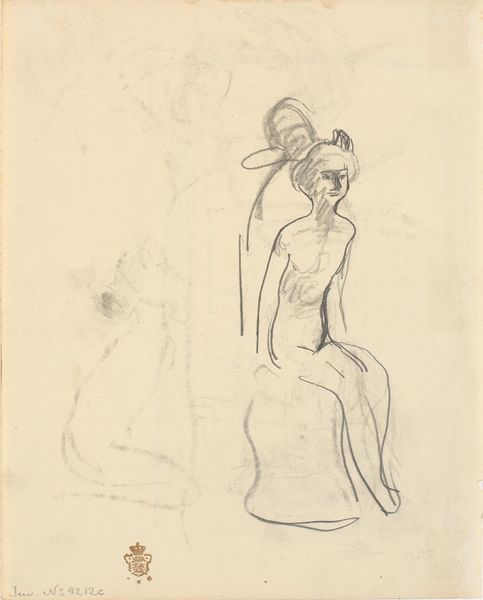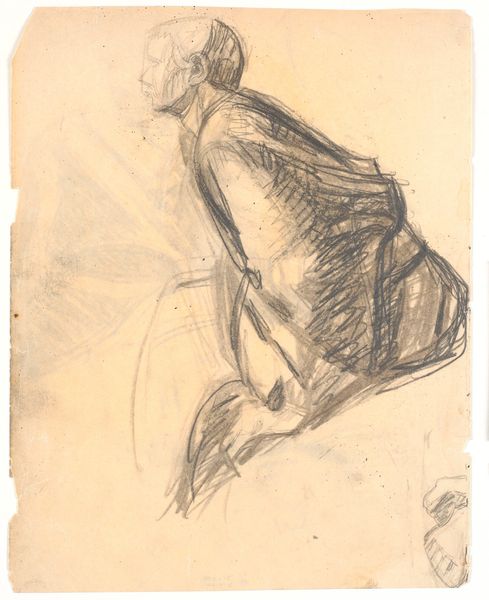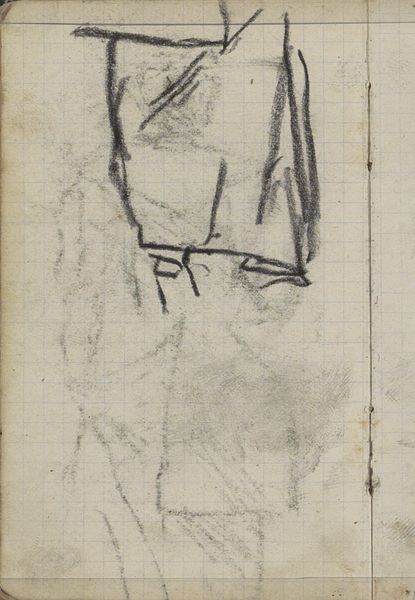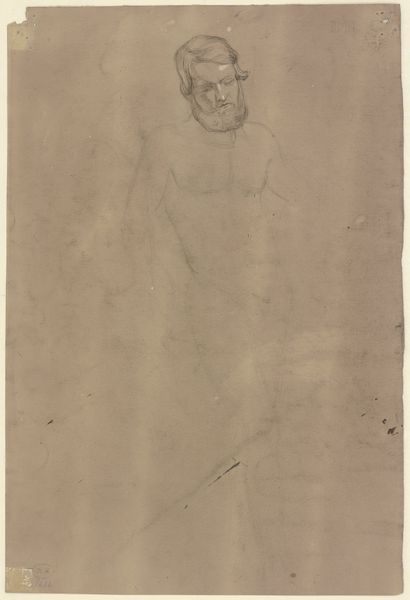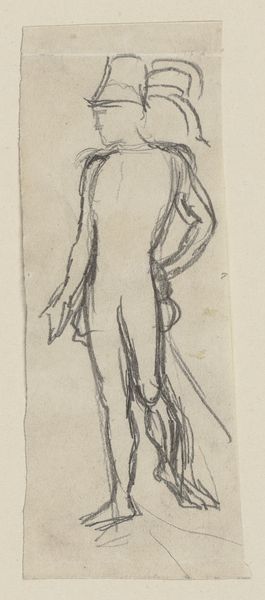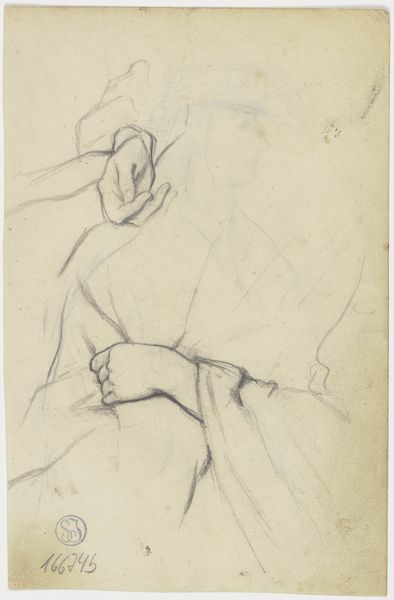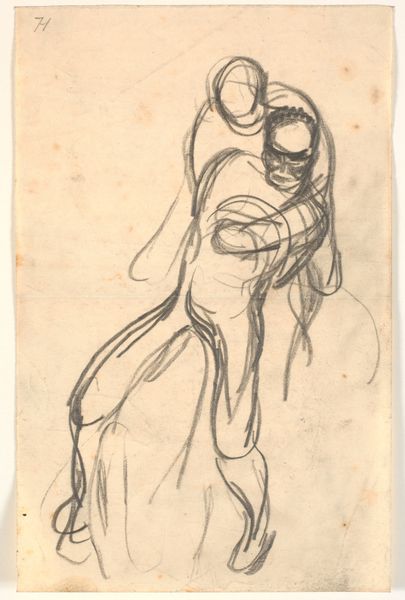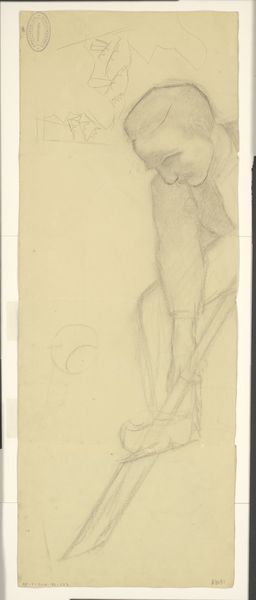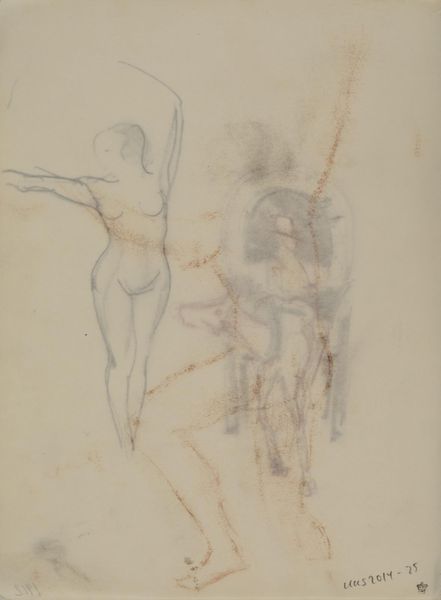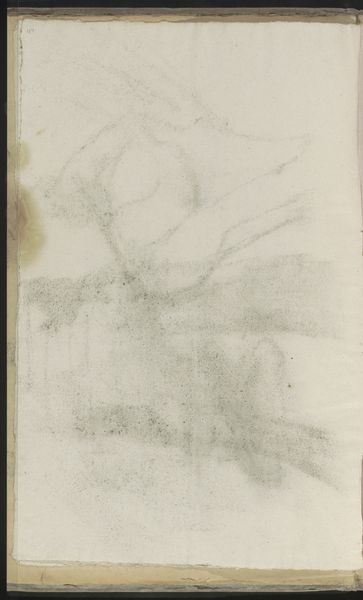
drawing, paper, pencil
#
drawing
#
pencil sketch
#
figuration
#
paper
#
pencil
Dimensions: 218 mm (height) x 184 mm (width) (bladmaal)
Editor: We're looking at Karl Isakson's "Udkast til 'Sif'," made between 1904 and 1909, a pencil drawing on paper. It's quite delicate, almost ethereal. The lines are so light. What can you tell us about it? Curator: Well, it’s fascinating to consider the raw materials and process here. A simple pencil, a readily available tool, and paper, likely mass-produced even then. Notice how Isakson isn’t obscuring the process. The sketch is the art itself, the labor laid bare. Consider the social context – early 20th century, industrialization. Isakson chose to work with simple tools rather than embrace mechanized modes of production for this initial idea. Why do you think that is? Editor: Maybe to keep it personal, connected to the subject, or perhaps a rejection of industrial art production? Curator: Exactly. And what of the “high art” aspect versus “craft?” Traditionally, a sketch is subservient to a finished painting or sculpture. But here, the sketch *is* the work. It challenges that hierarchy, elevating the labor of preliminary work, making us consider the act of making as valuable as the end product. Editor: So it's less about the perfect final form, and more about capturing the process of creation? Curator: Precisely. Consider the role of drawing at that time – academic exercises? Commercial reproductions? Isakson’s work sits between. Editor: This perspective shifts how I view sketches. Now I see the value in its raw and tactile qualities! Curator: Absolutely. By focusing on the means of production, the material, the labor, we gain insight into the artist’s intention and challenge preconceived notions about art’s value.
Comments
No comments
Be the first to comment and join the conversation on the ultimate creative platform.
